At Auto Motor Klassiek we are one hundred percent A-political during working hours. We don't care whether the country of origin is Germany or Japan. But of course there are other countries. Dneprs are from Kiev. Urals came from Irbit, now, by the way, they are made in peaceful Kazakhstan. And there's solid American money behind those new Urals. But left or right: Urals and Dneprs are quite popular and becoming sought after.
With an employee who has been driving 'Russian' for 25+ years, we have experienced the process of having a neat, complete Ural or Dnepr combination for less than 1.000 guilders. SPOILER ALERT: For an original beautiful, good Ural or Dnepr (KMZ or IMZ), especially if it is a side valve (750 cc, 20 hp plus a little), about € 5.500. For that money you have a classic with the same legendary roots as the Harley-Davidson WL 'Liberator' side-valves with the same displacement and reliability. Which, by the way, are currently changing owners for amounts between € 20.000-25.000.
Motorhuis Vink, Sieberg and Gossie once imported Urals (and Dneprs)
Their patronage was limited. Also in the motorcycle world at the time, Dneprs and Urals were already more than dated. And they couldn't compete with quality. They ended up with price buyers. Who structurally regretted their purchase. In the early days of the Ural/Dnepr Club Nederland, a ride was only successful if you had at least once had bad luck. Nobody thought about originality. Everyone was happy when their tricycle was doing just about anything. If you needed parts, you used used parts and it was very convenient that most parts of the side valve and later (650 cc OHV) were and are interchangeable. The greatest minds mounted Ugly duck blocks or DAF boxers from a Dafje 33 or 44. Mounting a BMW block larger than that of a BMW R45 provided more power than the bicycle part could handle. And anyway it was a waste of money. But meanwhile, very early Ural/Dnepr club members have dropped out because they no longer found the ex-Soviet people unreliable enough. The cowboy days are over. Originality is appreciated. And Originality started with the M72, the BMW R71 clone made in Irbit and Kiev. The 750 cc side valve, the ancestor of the heavy motorcycle industry there, IMZ and KMZ stands for Irbitsky Motocycletny Zavod and Kievski Motocyclcletny Zavod. Motorcycle factory Irbit and ditto Kiev. The names Ural and Dnepr were coined later for export reasons. I Kiev they still made side valves until the mid-sixties. In Irbit they had already switched to (650 cc) OHVs. The Ural OHVs were agricultural. They ran on ball bearings. The crankshaft of the more beautifully finished Dneprs ran in plain bearings and was equipped with a better lubrication system.
We make the line: In the Beginne there were the M72's
In 1958 IMZ presented the M61 with a 650 cc overhead valve block. Otherwise the machine was identical to the M72. Let's switch to Inbit/Ural. In 1960 the bike got a telescopic front fork and in 1965 the M63 got a swingarm rear fork and automatic advance. The M63 was also (limited) sold outside the then Eastern Bloc. In 1968 the M66 came on the market with a reverse gear. Also in '68 came a new tank and fenders. In 1972 came the engine that would remain largely unchanged until the end of 650 cc production: the M67. It went from 6 V to 12 V on-board electricity. In the eighties the power went from 36 to 34 hp, but the block got considerably more torque at low revs. The crankcase overpressure went through a hose to the air filter. The frame was modified in such a way that the gearbox could be disassembled with the engine simply in the frame. The tank lost its storage locker. There was an optional swingarm front fork (with a structural geometric fallacy). Later in the eighties, Ural simplified his offer. The tank box came back, there was a 300 W alternator and an optional starter motor. How did Ural do after that? You will read that in 25 years in Auto Motor Klassiek. There were again 750 cc machines. With Brembo brakes and injection…
I Kiev things were (somewhat) different
In 1950 M72 production went from Gorky to Kiev. In 1956 there was a sliding swing arm front fork with short swings. In 1959 the M72 became the K750. It also had a sprung, hydraulically damped rear fork and full hub brake. In the early sixties, the block was just 3 hp stronger: 26 hp was now the top. The rear fender was no longer foldable. The floating saddle floated on a rubber block. There was a military version with a driven sidecar wheel and the 'M' behind the type designation and became a quality indicator much later. The MT 9 got a reverse gear. In 1973 the MT 10 was presented. It had 12V on-board voltage, a 2LS front brake, a new tank and a new frame. The MT 9 just remained in production. The 12 MT1977 side valve replaced the too dated K series. Think of an MT 9 bicycle part, the tank of an MT 9. In the Eighties we got the MT 11 and MT 16. These were OHVs with the now-famous semi-automatic clutch. Usually the machines were equipped with a swing arm front fork that was geometrically more sophisticated than that of the Urals. The counter and air filter area was simplified. The MT 16 and MT 12's were made less and less and in increasingly poor quality. Until the lights went out at Dnepr.
But what was the problem at all?
We suffer from the blessed market forces, the source of all that must be good. But has destroyed more than we like. They didn't do that kind of piracy in the former Soviet times. The directors determined what and how much had to be made by whom. For example, De Macht asked heavy engines. They were called M72 as successors in a row. Think of our cows Clara 14 and Clara 15… The production of those M72s was assigned to two factories. Hard agreements were made about numbers. Not about details like quality and longevity. Enough were made of the legendary Russian T34 (yes, again just that serial number) in accordance with the planned economy. That about thirty percent was not in order or unusable at the end of the production line? Does not matter! The numbers produced were correct! For example, a police station in one of the republics received four sets of tires every year and four new motor stands for the trucks every five years… which they didn't have.
Fortunately, some of the tires could be exchanged for wine barrels that were delivered pointless elsewhere. There are countless hilarious/tragic examples of this approach. In the late days of the Dnepr factory, no numbers or rules applied. Drunk staff put together monstrosities without any motivation in a factory worn to the bone. The few years before that, there had been some sort of quality control for government and export. But that station was well passed by the late 2007s. The last light hung by a cord in the attic and went out in XNUMX. About three million Dneprs were made. Usually, low mileage on a motorcycle from the XNUMXs on is the perfect reason to refrain from purchasing. Older Urals and Dneprs that have been brought to a technically sound level with selected original parts are certainly no worse quality than HD WL machines.
Upgrade
In Germany, where loads of non-export Urals and Dneprs came because they looked so much like classic BMWs, there's a huge offer to make those old 'Russians' better. Cylinders, pistons, bearings, carburettors, modified Japanese alternators, cables, wirings…. You name it. Conversion kits to mount BMW boxers, stainless steel exhaust systems, brakes, oil pumps ... You can think of it so crazy. And it all costs serious money too. There is giggling in the corridors. A Dnepr or Ural remains a thing with limitations. You just have to learn to live with that. The machines are made for a road network that we hardly recognize as such. The lubrication system is based on slow rides with a lot of gear shifting. Avoid highways like the plague and realize that with an OHV you have enough power to drive at the front in any traffic jam.
The current state of affairs
After the Wende, wagonloads of Urals and Dneprs came to Germany. They looked like BMWs. They cost nothing on the purchasing side and the importers thought they were going to earn gold. 99% of those machines were once intended for the home market, bad from their first miles and eventually deadly tired and kept running at will. Think of Polski Fiat pistons and Lada or Moskvitch valves. In Germany, such engines still appear. In the Netherlands there are two people who have been using old Eastern Bloc tricycles for more than twenty years. One deals in complete machines. The other supplies parts. They know what they are talking about, know the downsides and the… well, other downsides of their passion. They ask their customers if they know what they are getting into and if they can tinker. The current cult factor of these machines also gives other people the idea to go into the Russian trade. If you are going on that more adventurous purchase path, it is more than advisable to have an expert accompany you. And you will have to realize that riding an M72, an Ural or a Dnepr is like being in a relationship. Because a relationship requires constant attention, love, care and respect. If you fall short of that, you will get more trouble than you can imagine.
In the photos we also see a Ural/Dnepr hybrid of the kind that is still being driven in the usually street poor Ex-Soviet countries. The take there is, "If he does it, it's a good one." The combination of bicycle part, engine block, gearbox and everything else covers a period of decades. While a good price indication can be given for original Urals and Dnepr's nowadays, this brave free-range roller falls outside the norm. You either fall for it or you think it's terrible. The owner fell for it.



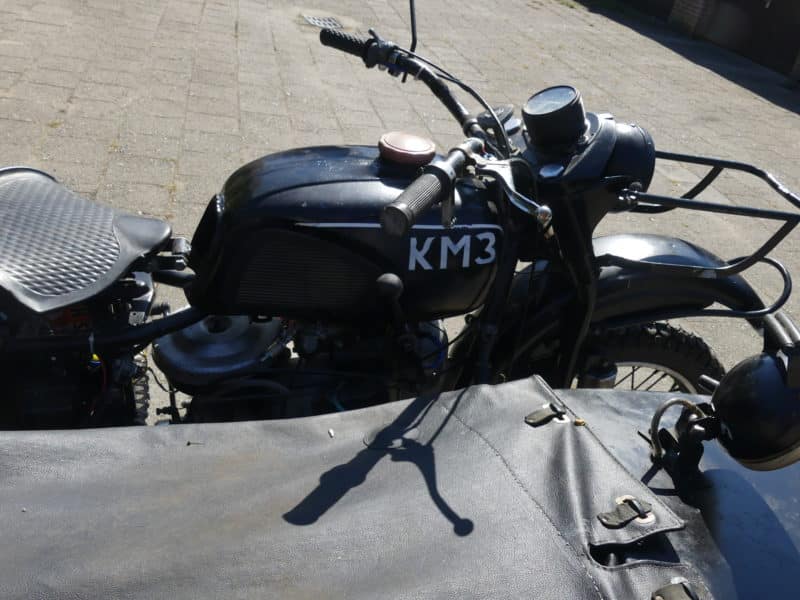
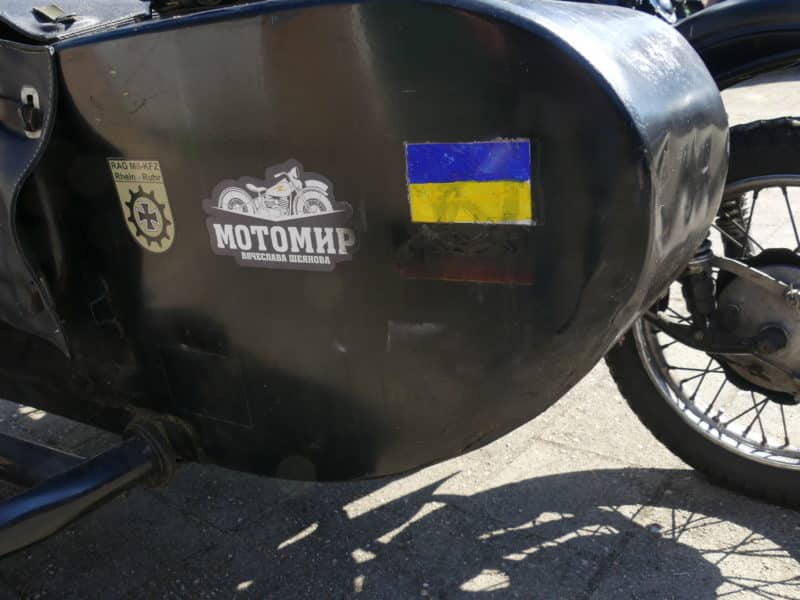
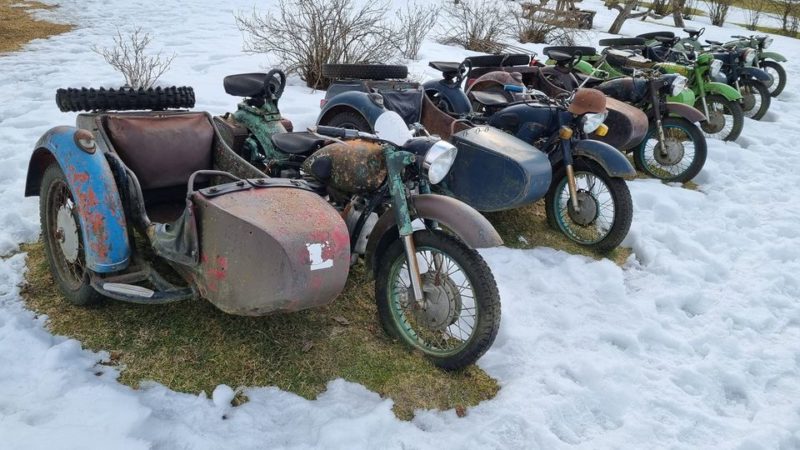
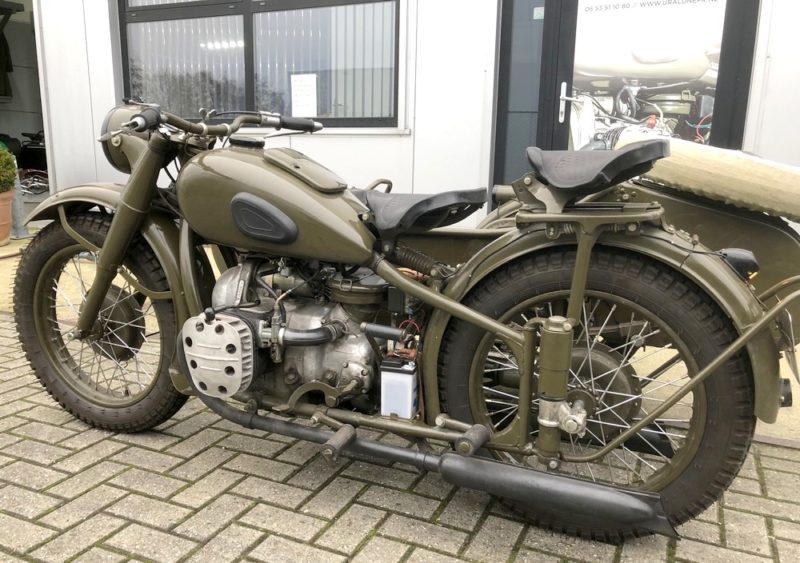
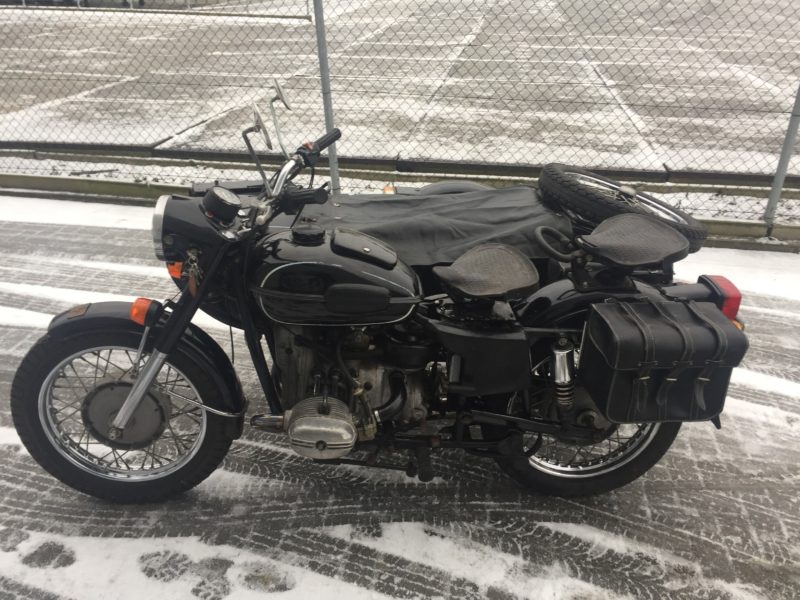





The very first M72, so not from IMZ but from the Moscovite MMZ, are worth serious money..
East Blockers are just fun… period.
Ideally suited for the sturdier steed in Natura 2000 areas, or for collecting your own firewood from the Veluwe.
Or stupidly cool a case of beer from the local neighborhood supermarket..
And have a fairly high cuddly factor.
We think the same way. And I just heard that Richard Busweiler now not only does Urals and Dneprs, but that he is now also a Jawa dealer. And those new Jawas are the only engines I would like to have one new. But of course my peeper never goes away!